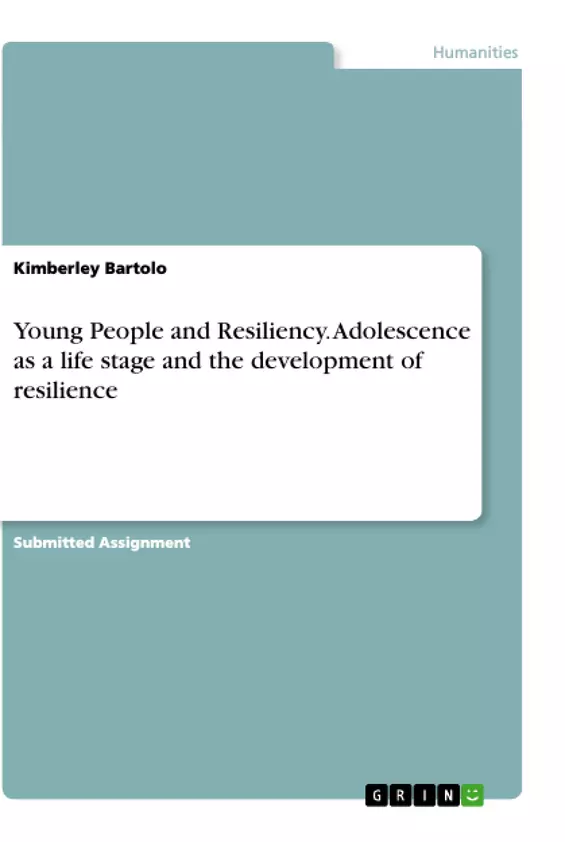Life is full of transitions; one of which is the transition between childhood to becoming a young adult. Not everyone experiences this transition in the same manner, yet the majority of young people refer to it as being a rather challenging period in their lives due to several changes that occur. For this reason, it is crucial that young people are equipped with the essential tools and skills so as to persevere, what is referred to as resilience. There are mainly three factors that impact adolescent resiliency, being psychological; behavioural and socio-cultural factors. In this assignment all of these factors are discussed with reference to adolescence as a life stage and the development of resiliency.
Inhaltsverzeichnis (Table of Contents)
- Introduction
- Background to Resiliency
- Psychological Factors
- Behavioural Factors
- Socio-Cultural Factors
- Conclusion
- References
Zielsetzung und Themenschwerpunkte (Objectives and Key Themes)
This work explores the concept of resilience in adolescents, examining how psychological, behavioral, and socio-cultural factors contribute to their ability to overcome challenging life events. The text delves into the unique challenges faced during adolescence, emphasizing the importance of resilience for successful transition into adulthood.
- The developmental changes and challenges experienced during adolescence
- The role of psychological factors, such as identity development, in fostering resilience
- The impact of behavioral factors, including coping mechanisms and problem-solving skills
- The influence of socio-cultural factors, such as family support and community resources
- The potential downsides of excessive resilience and the importance of recognizing individual differences
Zusammenfassung der Kapitel (Chapter Summaries)
- Introduction: This chapter introduces the concept of adolescence as a transitional life stage marked by significant changes in emotional, psychological, and physical domains. The chapter highlights the potential for adolescents to experience stress and trauma due to these transitions and introduces the concept of resilience as a crucial coping mechanism.
- Background to Resiliency: This chapter delves into the concept of resilience, discussing its multifaceted nature and its understanding as the ability to manage and overcome stressful life experiences. The chapter explores the interplay between "risk" and "protective" factors, emphasizing that resilience is not a fixed trait but rather a dynamic process shaped by individual characteristics and external circumstances.
- Psychological Factors: This chapter examines the significant impact of psychological factors, particularly identity development, on adolescent resilience. It explores the link between a strong sense of identity and the ability to cope with life stressors, highlighting the potential consequences of identity confusion for adolescent well-being.
Schlüsselwörter (Keywords)
Key terms and concepts explored in this work include adolescence, resilience, psychological factors, behavioral factors, socio-cultural factors, identity development, coping mechanisms, risk factors, protective factors, and the interplay between individual characteristics and external circumstances in shaping resilience.
- Citar trabajo
- Ms/ B.A Hons Kimberley Bartolo (Autor), 2019, Young People and Resiliency. Adolescence as a life stage and the development of resilience, Múnich, GRIN Verlag, https://www.grin.com/document/1031624



